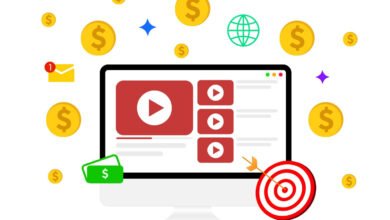YouTube Expands AI Tools for Content Creators

▼ Summary
– YouTube introduced new AI tools at its Made On YouTube event to help creators with behind-the-scenes tasks like content strategy and analytics.
– Ask Studio is an AI chatbot that provides creators with performance insights, comment summaries, and video optimization suggestions based on channel data.
– A new A/B testing feature allows creators to test thumbnail and title combinations to determine which yields the highest watch time.
– YouTube is expanding viewer-facing AI tools like auto-dubbing with lip-syncing and introducing video collaboration features for multiple creators.
– The use of AI in content creation raises questions about authenticity, audience trust, and the impact of algorithmic optimization on creativity.
For today’s digital creators, wearing multiple hats is part of the job, from editing and scripting to audience analysis and promotion. YouTube is now rolling out a suite of AI-powered tools designed to help creators streamline these behind-the-scenes tasks, allowing them to focus more on creativity and connection. These features, introduced at the recent Made On YouTube event, mark a significant shift in how platforms support content strategy and optimization.
One of the standout additions is Ask Studio, an integrated AI chatbot that acts as a creative and analytical assistant. Creators can pose questions about their channel’s performance, such as which parts of a video viewers are skipping or what comments reveal about audience sentiment. The tool synthesizes data from both long-form videos and Shorts, offering actionable suggestions, like refining a segment where engagement drops or generating new video ideas based on viewer feedback. While it doesn’t yet support competitive analysis, it provides a faster, more intuitive way to interpret analytics without leaving the platform.
Another major update involves A/B testing for both thumbnails and titles, expanding on last year’s thumbnail-only feature. Creators can now test different pairings to see which combination drives the highest watch time. As lifestyle influencer Ashley Alexander notes, “No matter how good the video is, the thumbnail and title are what pull people in. It might be the most important thing.” She has integrated the tool into her workflow, using it to refine nearly every upload.
This move represents a broader trend: platforms are increasingly guiding creators on what and how to post. Instead of relying on guesswork, creators now receive direct, data-driven recommendations aimed at maximizing reach and retention. This benefits both parties, creators grow their audience, and platforms keep viewers engaged longer.
YouTube is also enhancing viewer-facing tools like AI dubbing, which now includes lip-syncing for a more natural experience. Videos using this feature will carry an auto-dubbing badge, though creators won’t be able to manually correct translations after upload. Additionally, a new collaboration option allows multiple creators to co-post a video and track its performance together.
The rise of AI in content creation raises important questions about authenticity and originality. As platforms encourage the use of automated tools for ideation and optimization, some worry about homogenization, if everyone uses the same AI suggestions, will content start to feel repetitive? YouTube’s recent policy update around “inauthentic content” also hints at growing scrutiny over mass-produced AI material.
Still, many creators see these tools as a starting point rather than a substitute for genuine creativity. Alexander emphasizes that while AI-generated ideas can be helpful, she ultimately knows her audience best. The personal connection and unique perspective that creators offer can’t be replicated by algorithms, audiences tune in for the person behind the content, not just the perfectly optimized output.
(Source: The Verge)





